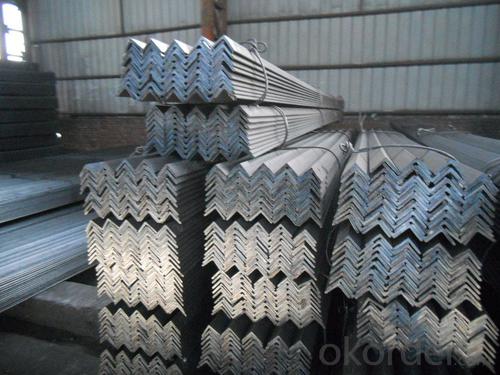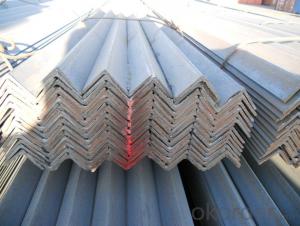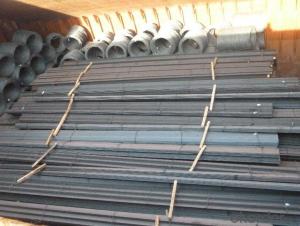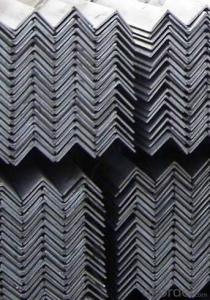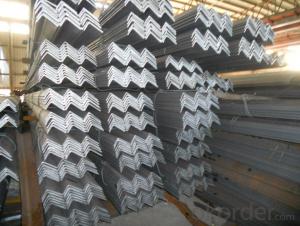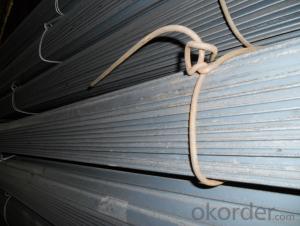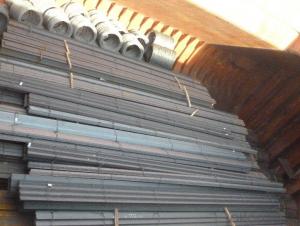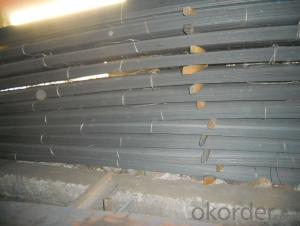Hot Rolled Equal Angle Steel of Low Carbon for Towers
- Loading Port:
- Shanghai
- Payment Terms:
- TT OR LC
- Min Order Qty:
- 25 m.t.
- Supply Capability:
- 200000 m.t./month
OKorder Service Pledge
OKorder Financial Service
You Might Also Like
Specification
Product Description:
OKorder is offering Hot Rolled Equal Angle Steel of Low Carbon for Towers at great prices with worldwide shipping. Our supplier is a world-class manufacturer of steel, with our products utilized the world over. OKorder annually supplies products to European, North American and Asian markets. We provide quotations within 24 hours of receiving an inquiry and guarantee competitive prices.
Product Applications:
Hot Rolled Equal Angle Steel of Low Carbon for Towers are ideal for structural applications and are widely used in the construction of buildings and bridges, and the manufacturing, petrochemical, and transportation industries.
Product Advantages:
OKorder's Hot Rolled Equal Angle Steel of Low Carbon for Towers are durable, strong, and resist corrosion.
Main Product Features:
· Premium quality
· Prompt delivery & seaworthy packing (30 days after receiving deposit)
· Corrosion resistance
· Can be recycled and reused
· Mill test certification
· Professional Service
· Competitive pricing
Product Specifications:
Specifications of Hot Rolled Equal Angle Steel of Low Carbon for Towers
1. Invoicing on theoretical weight or actual weight as customer request.
2. Length: 6m, 9m, 12m.
3. Sizes:
Size(mm) | Mass(Kg/m) | Size(mm) | Mass(Kg/m) |
50*50*4 | 3.059 | 63*63*5 | 4.822 |
50*50*5 | 3.77 | 63*63*6 | 5.721 |
50*50*6 | 4.465 |
Alloy No | Grade | Element (%) | |||||
C | Mn | S | P | Si | |||
Q235 | B | 0.12—0.20 | 0.3—0.7 | ≤0.045 | ≤0.045 | ≤0.3 | |
Alloy No | Grade | Yielding strength point( Mpa) | |||||
Thickness (mm) | |||||||
≤16 | >16--40 | >40--60 | >60--100 | ||||
≥ | |||||||
Q235 | B | 235 | 225 | 215 | 205 | ||
Alloy No | Grade | Tensile strength (Mpa) | Elongation after fracture (%) | ||||
Thickness (mm) | |||||||
≤16 | >16--40 | >40--60 | >60--100 | ||||
≥ | |||||||
Q235 | B | 375--500 | 26 | 25 | 24 | 23 | |
Packaging & Delivery of Hot Rolled Equal Angle Steel of Low Carbon for Towers
1. Packing: it is nude packed in bundles by steel wire rod
2. Bundle weight: not more than 3.5MT for bulk vessel; less than 3 MT for container load
3. Marks:
Color marking: There will be color marking on both end of the bundle for the cargo delivered by bulk vessel. That makes it easily to distinguish at the destination port.
Tag mark: there will be tag mark tied up on the bundles. The information usually including supplier logo and name, product name, made in China, shipping marks and other information request by the customer.
If loading by container the marking is not needed, but we will prepare it as customer request.
4. Transportation: the goods are delivered by truck from mill to loading port, the maximum quantity can be loaded is around 40MTs by each truck. If the order quantity cannot reach the full truck loaded, the transportation cost per ton will be little higher than full load.
5. Delivered by container or bulk vessel
FAQ:
Q1: Why buy Hot Rolled Equal Angle Steel of Low Carbon for Towers from OKorder.com?
A1: All products offered byOKorder.com are carefully selected from China's most reliable manufacturing enterprises. Through its ISO certifications, OKorder.com adheres to the highest standards and a commitment to supply chain safety and customer satisfaction.
Q2: How do we guarantee the quality of our products?
A2: We have established an advanced quality management system which conducts strict quality tests at every step, from raw materials to the final product. At the same time, we provide extensive follow-up service assurances as required.
Q3: How soon can we receive the product after purchase?
A3: Within three days of placing an order, we will begin production. The specific shipping date is dependent upon international and government factors, but is typically 7 to 10 workdays.
Images:
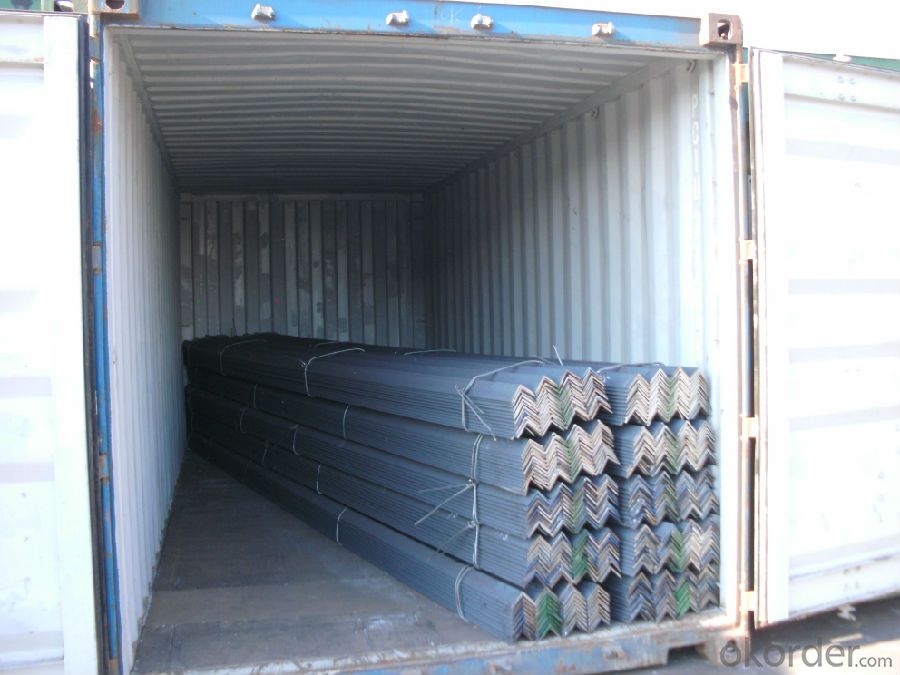
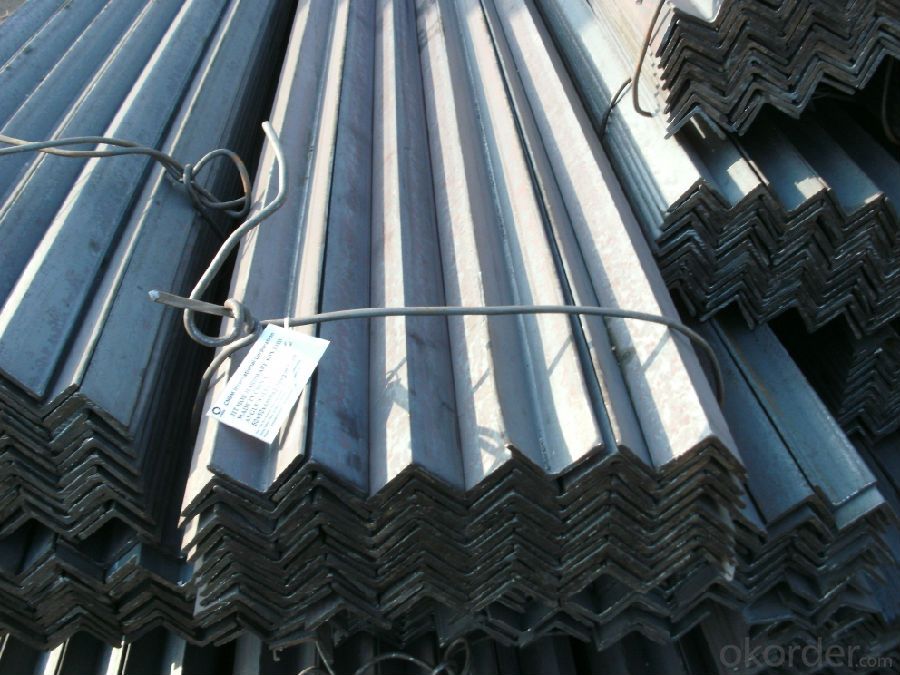
- Q: What is the cost of a steel angle?
- The price of a steel angle may differ based on various factors including its size, grade, thickness, and the supplier or manufacturer chosen. Typically, steel angles are priced either per length or per weight. When determining the cost, it is crucial to take into account the market situation, location, and specific requirements of the desired steel angle. To obtain precise and current pricing details, it is advisable to reach out to local suppliers or manufacturers.
- Q: Can steel angles be used for pedestrian bridges or walkways?
- Yes, steel angles can be used for pedestrian bridges or walkways. Steel angles are commonly used in construction due to their strength, durability, and versatility. They can be easily fabricated and welded to create the desired structural elements for bridges and walkways. Steel angles provide excellent load-bearing capabilities, making them suitable for supporting pedestrian traffic. Additionally, the corrosion-resistant properties of steel make it an ideal choice for outdoor applications where exposure to weather elements is a concern. Overall, steel angles are a popular choice for pedestrian bridges and walkways due to their reliability and ability to meet the necessary structural requirements.
- Q: What are the maximum allowable deflections for steel angles?
- The maximum allowable deflections for steel angles depend on various factors such as the specific application, loadings, and design codes or standards being followed. However, in general, deflections for steel angles should be within acceptable limits to ensure structural integrity and safety. It is recommended to consult relevant design codes, standards, or structural engineers to determine the specific maximum allowable deflections for steel angles in a given situation.
- Q: Angle iron specifications 125 * 80 * 101 m multiple
- The angle iron can be made up of different force components according to the different structure, and can also be used as the connecting piece between the components. Widely used in a variety of architectural and engineering structures, such as beams, bridges, towers, hoisting and conveying machinery, ships, industrial furnace, reaction tower, container frame, cable bracket, power piping, busbar support installation, and warehouse shelves.
- Q: Can steel angles be used for mezzanine floors?
- Indeed, mezzanine floors can be constructed using steel angles. In construction, steel angles are widely employed as structural elements, particularly for mezzanine floors. They offer stability and support to the framework, enabling the expansion of floor space. With their robustness and durability, steel angles are ideal for bearing substantial loads and guaranteeing the security of the mezzanine floor. Furthermore, the fabrication and installation of steel angles are effortless, rendering them a cost-efficient option for the construction of mezzanine floors.
- Q: How do steel angles contribute to energy-efficient construction?
- Steel angles contribute to energy-efficient construction in several ways. Firstly, steel angles are commonly used as structural components in buildings, such as in the framing of walls, roofs, and floors. Their high strength-to-weight ratio allows for the creation of lighter and more efficient structures. This means that less steel is needed to support the building, reducing the overall weight and material usage, which in turn reduces the energy required for construction and transportation. Secondly, steel angles can be easily prefabricated off-site, allowing for faster construction times and reduced labor costs. This not only saves time and money but also minimizes energy consumption during the construction process. Moreover, steel is a highly durable and long-lasting material, which reduces the need for frequent maintenance and repairs. This durability translates into energy savings over the life cycle of the building, as less energy is required for ongoing maintenance and replacements. Additionally, steel angles can be recycled at the end of their life cycle, reducing the demand for virgin materials and minimizing the environmental impact of construction. The recycling process requires less energy compared to the production of new steel, resulting in energy savings and reduced greenhouse gas emissions. Lastly, steel angles can be integrated into energy-efficient building systems, such as insulation, HVAC ductwork, and renewable energy installations. The versatility of steel allows for the creation of systems that optimize energy performance, such as efficient heating and cooling systems or solar panel installations. In conclusion, steel angles contribute to energy-efficient construction by providing strength and stability while reducing material usage, enabling faster construction times, minimizing maintenance needs, facilitating recycling, and integrating with energy-efficient building systems.
- Q: What are the different finishes available for steel angles?
- There are several different finishes available for steel angles, including hot-dip galvanized, mill finish, painted, and powder coated.
- Q: How do you prevent steel angles from bending under load?
- In order to prevent steel angles from bending under load, several important measures can be taken: 1. Choose the appropriate size and material for the angle: It is important to select a steel angle that is of sufficient size and material strength to withstand the expected load. Seeking guidance from structural engineering guidelines or professionals can help determine the correct dimensions and material composition for the specific application. 2. Strengthen the angle: Enhance the strength of the steel angle by adding additional support or reinforcement. This can be achieved through techniques such as welding extra plates to the angle, utilizing gussets or stiffeners, or incorporating diagonal bracing. These reinforcements help distribute the load more evenly and reduce the likelihood of bending. 3. Increase the thickness: If possible, increasing the thickness of the steel angle can improve its ability to bear loads. A thicker angle will have greater resistance to bending and deformation under load. 4. Ensure proper installation: It is crucial to install the steel angles correctly and securely in order to maximize their resistance to bending. This involves using appropriate fasteners, such as bolts or welds, and following proper installation techniques. 5. Avoid excessive loads: Preventing steel angles from bending under load also requires careful consideration of the maximum load they will encounter. It is important to avoid overloading the angles beyond their design capacity, as this significantly increases the risk of bending or failure. 6. Regular inspections: Regularly inspect the steel angles for any signs of bending, cracking, or deformation. Prompt identification of potential issues allows for timely maintenance or reinforcement, preventing further damage or accidents. To ensure the proper design and implementation of these measures, it is crucial to consult with a qualified structural engineer or professional experienced in steel fabrication.
- Q: Do steel angles come with any warranties?
- Indeed, warranties are usually included with steel angles. The particular terms of the warranty may differ contingent upon the manufacturer or supplier. Nevertheless, reputable companies commonly provide warranties to guarantee the excellence and functionality of their steel angles. These warranties generally encompass flaws in materials or workmanship and can span from a few months to numerous years. It is prudent to review the manufacturer or supplier's warranty terms and conditions prior to acquiring steel angles to comprehend the scope and duration of the warranty coverage.
- Q: What are the different methods for strengthening steel angles?
- Different techniques can be employed to enhance the strength of steel angles, based on the specific necessities and intended uses. The following are several commonly used methods: 1. Heat treatment: To increase the hardness and strength of steel angles, heat treatment processes such as quenching and tempering are frequently employed. Quenching involves rapidly cooling the steel angle after heating it to a high temperature, while tempering includes reheating the quenched steel angle to a lower temperature. These processes minimize brittleness and improve toughness. 2. Alloying: By introducing certain alloying elements like chromium, molybdenum, or nickel, the strength and hardness of steel angles can be significantly augmented. These alloying elements form solid solutions with the iron matrix, leading to enhanced mechanical properties and resistance to wear or corrosion. 3. Cold working: The strength and hardness of steel angles can be increased through cold working techniques such as cold rolling, cold drawing, or cold forming. These approaches involve deforming the steel angle at room temperature, creating dislocations in the crystal structure and boosting its strength. 4. Welding: Strengthening steel angles can be achieved by employing welding methods like fusion welding or spot welding to join them with other steel components. The weld joint often provides additional strength and rigidity to the steel angle structure. 5. Surface treatments: Employing various surface treatments such as galvanizing, powder coating, or painting can improve the corrosion resistance of steel angles, thereby increasing their durability and overall strength. It should be noted that the selection of the appropriate method for strengthening steel angles relies on factors such as the specific steel grade, intended application, and desired mechanical properties. Consulting with a professional engineer or metallurgist is advisable to determine the most suitable method for a particular scenario.
Send your message to us
Hot Rolled Equal Angle Steel of Low Carbon for Towers
- Loading Port:
- Shanghai
- Payment Terms:
- TT OR LC
- Min Order Qty:
- 25 m.t.
- Supply Capability:
- 200000 m.t./month
OKorder Service Pledge
OKorder Financial Service
Similar products
Hot products
Hot Searches
Related keywords




